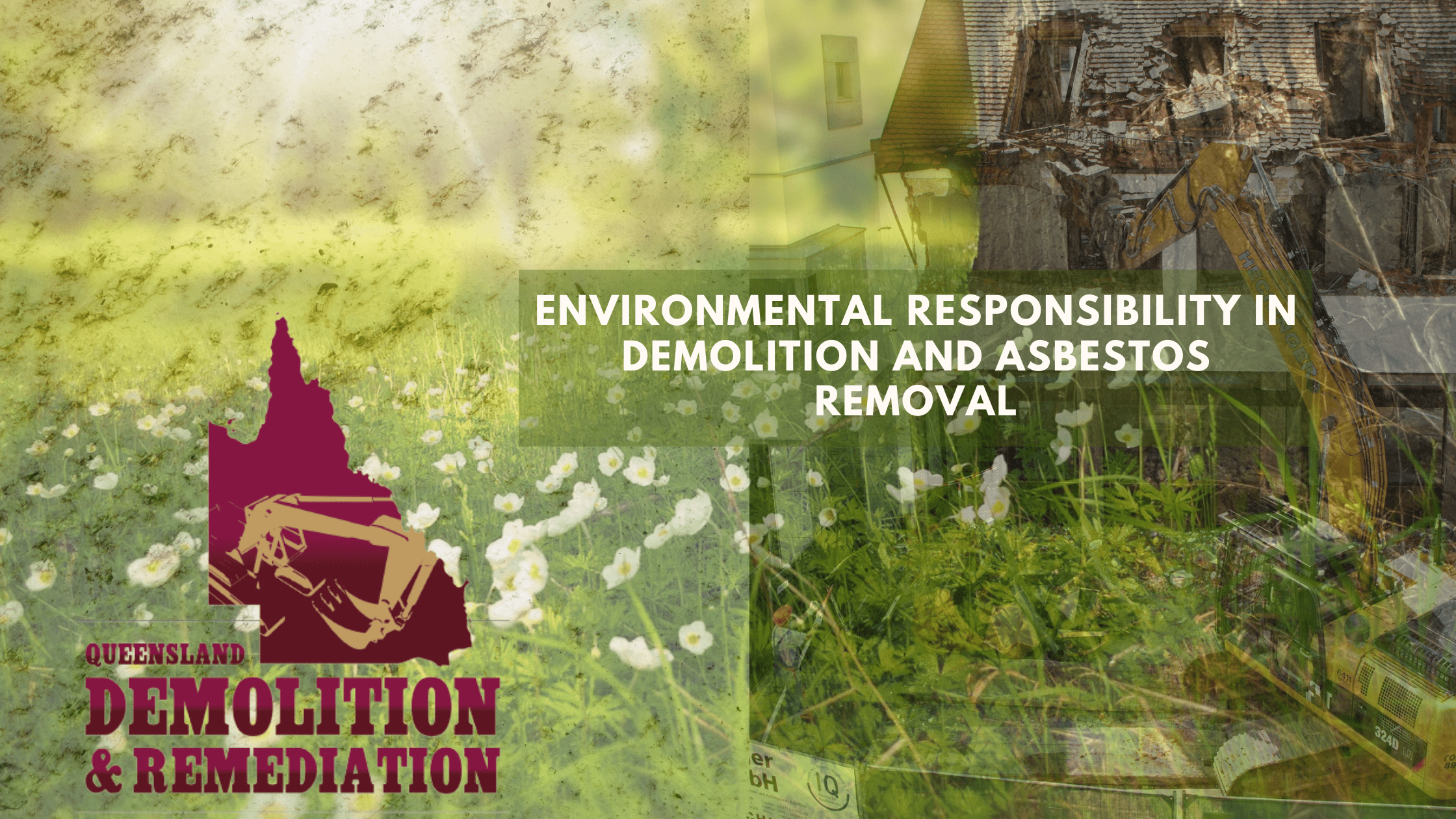Explore the vital concept of environmental responsibility in demolition and asbestos removal. Discover how these practices promote safety, sustainability, and a cleaner environment. Learn from experts about the importance of responsible approaches in these processes.
Introduction
In today’s world, the focus on environmental responsibility has never been more critical. This rings true in industries such as demolition and asbestos removal, where the impact on the environment can be substantial. This article delves into the significance of environmental responsibility in demolition and asbestos removal, highlighting practices that ensure safety, sustainability, and conscientious handling of these processes.
Environmental Responsibility in Demolition and Asbestos Removal: A Holistic Approach
Environmental responsibility is not just a buzzword – it’s a commitment to safeguarding our planet. In the context of demolition and asbestos removal, this responsibility encompasses a range of practices that minimize environmental harm while prioritizing safety and efficiency.
The Environmental Challenges of Demolition and Asbestos Removal
Demolition and asbestos removal inherently pose environmental challenges due to the potential release of hazardous substances into the air, soil, and waterways. This underscores the need for comprehensive strategies that address these challenges head-on.
Safe Demolition Techniques to Minimize Environmental Impact
Embracing innovative demolition techniques can significantly reduce the environmental footprint. Controlled implosions, deconstruction, and salvage operations allow for the reuse of materials, minimizing waste generation and conserving resources.
Asbestos Removal: Mitigating Health and Environmental Risks
Asbestos, a once commonly used construction material, poses severe health risks when its fibers become airborne. Proper asbestos removal involves meticulous planning and execution to prevent both health hazards and environmental contamination.
The Role of Technology in Responsible Demolition and Asbestos Removal
Cutting-edge technologies, such as remote-controlled machinery and advanced air filtration systems, play a pivotal role in reducing environmental impacts during demolition and asbestos removal. These technologies enhance precision, efficiency, and safety.
Waste Management Strategies: From Sorting to Disposal
Effectively managing waste generated from demolition and asbestos removal is crucial. Implementing rigorous sorting and recycling practices diverts materials from landfills. Hazardous waste disposal must adhere to stringent regulations to prevent environmental harm.
Collaboration with Environmental Experts: Ensuring Best Practices
Engaging environmental experts in the planning and execution phases enhances the efficacy of demolition and asbestos removal projects. Their insights ensure that every step aligns with sustainability goals and environmental regulations.
Local Regulations and Permits: Navigating the Legal Landscape
Adhering to local regulations and obtaining necessary permits is vital for environmentally responsible demolition and asbestos removal. These regulations safeguard communities and ecosystems from potential harm.
Community Engagement and Transparency
Engaging with local communities fosters transparency and accountability. By addressing concerns and providing information about safety measures, demolition and asbestos removal projects can gain community support and trust.
FAQs: Environmental Responsibility in Demolition and Asbestos Removal
Q: Are there safer alternatives to traditional demolition methods?
Absolutely. Modern demolition techniques like deconstruction and salvage operations prioritize safety and environmental responsibility. These methods reduce waste and promote resource conservation.
Q: Why is asbestos removal so crucial in environmental responsibility?
Asbestos fibers, when released into the air, pose severe health risks. Proper removal ensures the safety of workers, residents, and the environment by preventing the spread of these harmful fibers.
Q: How can technology enhance waste management during demolition?
Technology enables precise sorting of materials, identifying recyclable items. Additionally, advanced machinery aids in reducing waste volume, minimizing the impact on landfills and the environment.
Q: What is the role of community engagement in demolition projects?
Community engagement builds trust and fosters open communication. Engaging with locals allows project managers to address concerns, share safety measures, and demonstrate a commitment to environmental responsibility.
Q: What happens to hazardous materials during demolition projects?
Hazardous materials are carefully identified, handled, and disposed of following strict regulations. Specialized contractors ensure that these materials do not pose a threat to the environment or public health.
Q: How do demolition companies ensure compliance with environmental regulations?
Experienced demolition companies collaborate closely with environmental experts and regulatory bodies. This partnership ensures that projects adhere to regulations, maintaining both safety and environmental responsibility.
Conclusion
Environmental responsibility in demolition and asbestos removal underscores the necessity of safeguarding our environment while accomplishing necessary tasks. By adopting safe techniques, leveraging technology, collaborating with experts, and engaging communities, the industry can achieve a balance between progress and planet preservation.

